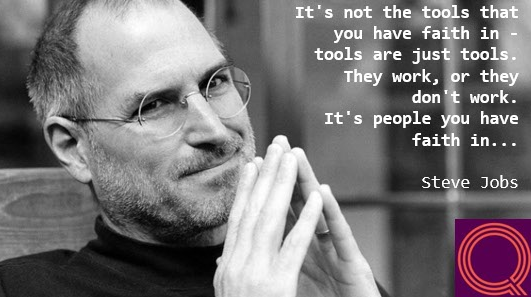Analytics – It’s not about the System
It’s not about the bike, it’s not about the system
As with competitive athletes, or successful tradespeople, it is not just the “tools of the trade” that garner the greatest success. Whilst they are enablers, it is the human element that remains the key factor for real achievement . . . .
To be competitive in today’s world, businesses know that they have to optimise all of their resources to improve their bottom line. Companies have been so good at using data to do this across many aspects of their organisation such as Finance, Marketing or Operations. Yet for the workforce, which is arguably their biggest “asset” and usually one of their largest cost bases, companies have been a bit slower at applying data and analytics. At the same time, now that the value of workforce analytics is becoming appreciated, some companies are overinvesting in technology while neglecting the other critical factor of success people.
Innovative organisations use people metrics and workforce analytics as a competitive advantage. Harvard Business Review has said superior analytics capabilities will become a “decisive competitive asset” and that companies who employ workforce analytics “enjoy higher quality, productivity, customer satisfaction, and market share — and they’re more profitable, too.”1.
Other research is coming thick and fast and the benefits are being demonstrated clearly. Deloitte 2014 Trends in Human Capital shows that workforce analytics is rated among the top five priorities in every region of the world, yet only 4% of organisations believe they have the right workforce analytics capabilities now. The research indicates that companies that implement true business-oriented workforce analytics can double their engagement, improve revenue, and dramatically increase almost every business measure by making better people decisions.
Usually, the quick solve solution for organisations is seen to be to purchase and implement the latest technology package. And believe me, there are some great ones out there and they are only getting greater. Gone is the old clunky transactional HRIS and coming at you are some truly clever and forward looking solutions. These platforms allow companies to automate and integrate much of their data, and, boy oh boy, do they look pretty!
However, they are not going to be the panacea for the value you need. You still require a human to overlay judgement, business acumen and decision making. It is not just about data – anyone can run a report out of the latest, whiz-bang solution. It is about providing meaningful insights that enable informed decisions that are actually going to solve a problem that the business is facing.
Otherwise, you are at risk of churning out reports and parading pre-designed dashboards in front of your organisation that merely ticks off the analytics box. But the real value is taking this output, combining many disparate data sources (not just your HR system), and performing specific, organisational relevant analysis in combination with human knowledge. This will create the insights necessary to drive towards the best business outcomes and prescriptive intelligence that answer the question – what should we do about it?
No matter how great your technology is, how much you have invested in the latest and greatest – every business needs to have good people who can bring the people data and analytics together with the business model and HR programs. Real insights cannot be bought off-the-shelf, and cannot be pre-determined and packaged up with a nice bow. The fact is that each and every business is facing differing priorities and pressures that require tailored workforce (and business) analytics.
Recently, Google– which we all know has been much cited around its extensive use of analytics around the workforce – had developed a complex algorithm to determine which employees should be promoted. Originally the view had been that all people decisions at Google would be based on data and analytics, and that analytics would simply spit out people decisions according to Google executive Prasad Shetty. However the people who were meant to be using it hated it and it was never used to actually make promotion decisions at Google. The key learning was that you can’t replace humans – people need to make decisions and should be armed with better information to do so, not be simply replaced with algorithms and technology.
As for self-service, given all of the competing demands that today’s business leaders are facing – do they really want to be wading through pages of data and dashboards wondering how to bring it together, how it links to real business outcomes and what should they actually do about it. By all means I am for targeted self service, which can enhance the visibility of, and accountability for, workforce data and measures across the organisation. But it is HR’s job to bring deep workforce insights to the vaunted table. Let’s not outsource the huge value that this function should provide. The expertise of the HR function around all aspects of talent is so greatly enriched by combining it with analytics to better target and focus insights for maximum business impact.
At the end of the day, the success of utilising the information that is being provided out of any system is to draw together meaning to determine action. The greatest value comes from having that data supported by people who have the expertise to integrate workforce data with business and industry knowledge, tell executives a story with that data and use it to guide decisions that will optimise the workforce for business success. It often starts with asking the right questions and no software or system can do this for you alone. By all means, invest in technology, but you absolutely must invest in people.

